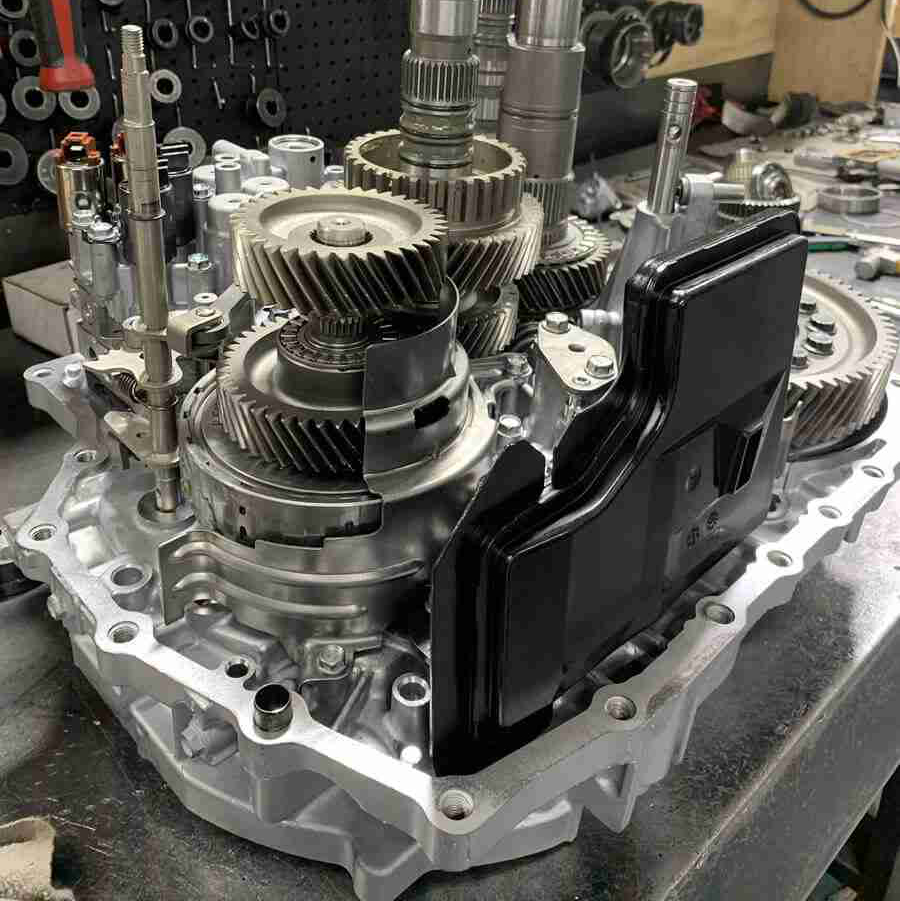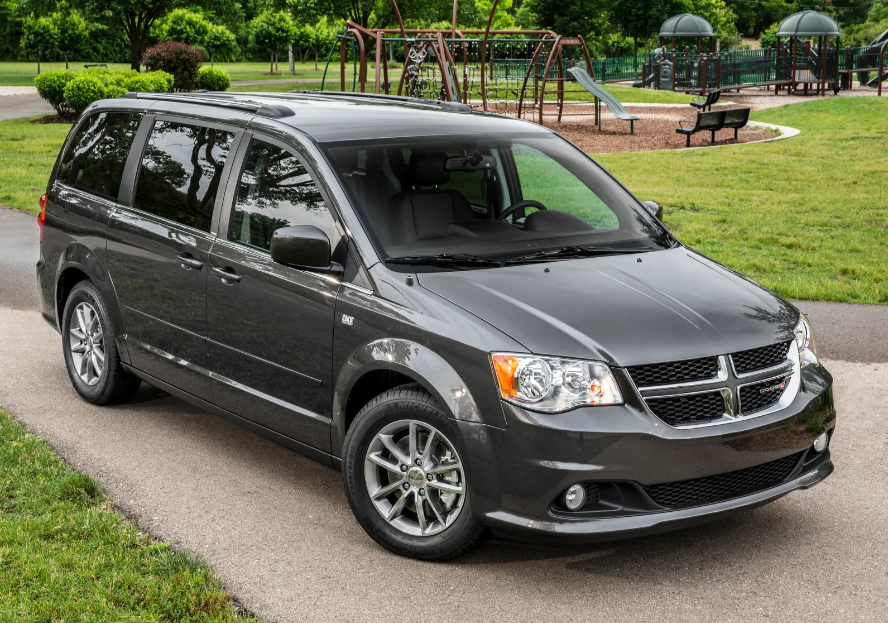
MINIVANS ARE A POPULAR NOMAD VEHICLE. They’re plentiful and relatively inexpensive, and get better fuel mileage than full-sized vans. Over the years, I’ve come across various people saying not to buy some brand or another because the transmissions are total junk. A lot of that is hyperbole, but if you search “most common minivan problems” — like I did — you learn transmissions are high on the list, regardless of the brand. Let’s take a look.

Chrysler Town & Country / Dodge Grand Caravan
The transmissions in these corporate siblings have been the topic of several Technical Service Bulletins (TSB). The issues include rough shifting, slipping gears, delayed engagement, and shuddering while driving.
Sometimes the cure was reprogramming the electronic control module. That’s not a labor intensive job — just plug in the computer, push some buttons.
Other times the fix requires serious hours of wrenching, like replacing the torque converter, valve body or solenoid pack.
Fiat Chrysler Automobiles (which has since merged with other European brands to form Stellantis) issued a recall in 2016 for more than 1.1 million of their vehicles, including specific models of the 2011-2016 Town & Country and Grand Caravan, because of a defect that could cause the transmission to unexpectedly shift into neutral when driving, parked or whenever. The recall involved replacing the transmission control module with an updated version.

Honda Odyssey
1999-2001 model years: The four-speed transmission had issues with the transmission slipping, harsh shifting, and failure to engage. Some of the minivans would get stuck in gear, sometimes to the point of total failure, requiring the transmission’s replacement.
2002-2004 model years: Honda released a new and improved five-speed transmission in 2002. It was not an improvement.
2005-2006 model years: Honda reworked the previous transmission to remedy its problems. But now there were different ones, including harsh shifting and slipping, which might have been caused by faulty pressure switches or torque converters.

Toyota Sienna
Even weld-the-hood-closed-and-drive-forever Toyota has had transmission problems, particularly the Siennas from 2004 to 2010. TSBs were issued for several things:
Abrupt, lurching shifting: The cause could be damaged or worn out transmission solenoids or faulty torque converters.
Slipping gears: In some cases the transmission would slip out of gear, allowing the engine to rev without any corresponding increase in speed. This could be caused by a low transmission fluid level (inadequate owner maintenance), a damaged transmission band, or a worn-out clutch. (Yes, automatic transmissions have clutches. They’re just automatic.)
Transmission failure: In some cases, the transmission would fail completely, requiring replacement.

Hyundai Entourage and Kia Sedona
The Entourage (2006-2009) and Sedona (2006-2014) are corporate cousins that share the same drivetrain. They also share the same types of transmission issues as the other minivans.

What about the not-exactly minivans?
When we look at compact vans like the Ford Transit Connect, Ram Promaster City, Nissan NV200, and Chevrolet City, there is a little hope and a little despair. The Ford transmission has generated few complaints. On the other hand, the transmission in the small Ram is generally loathed. And the NV200 and City (which is an NV200 in disguise) take the middle ground.

What about the good old minivans?
To those who believe they just don’t make ‘em like they used to, the Chevrolet Astro-GMC Safari, Ford Aerostar/Windstar/Freestar, and the various permutations of Volkswagen vans offer hope of trouble-free transmissions. Oh, and there are the seldom seen minivans from Buick, Pontiac and Oldsmobile. Although the transmission problems of these early minivans may or may not have been less frequent back in the day, the biggest issue at this point is their age. Mechanical things wear out over time. Even a great transmission will last only so long.
How long should a minivan transmission last?
Trucks routinely go three to four hundred thousand miles or more without any transmission problems. But passenger vehicles — which minivans are — aren’t built as ruggedly. Their lifespan tends to max out at 200,000± miles. So a minivan with over 100,000 miles is starting to get long of tooth. Various types of mechanical problems, not just transmissions, will become more frequent. And costly. And, as with any machine, a minivan’s reliability and overall condition depends on how it has been maintained or neglected — by previous owners and by you.

Why am I telling you all this?
Knowing about these problems might give you a new unwanted thing to worry about. And if you never have a transmission problem you will have worried needlessly. While I sometimes like a bit of blissful ignorance myself, I think it’s better to be informed and forewarned.
With any front-wheel-drive car (which nearly all minivans are) just getting to the transmission usually requires removing most of the front suspension or the entire engine-transmission-suspension subassembly. That’s a lot of expensive labor time. Few of us nomads have the financial luxury of making bad choices. I don’t want any of you to be cursing and/or crying as your home is towed off to a huge repair bill.

How much should you worry?
A J.D.Power study of vehicle dependability conducted in 2021 looked at the types and frequency of problems reported by original owners of three-year-old vehicles of all types. When all the numbers were crunched, 5.5 percent of minivan owners had transmission problems. Some of them were major, some were minor. That was only one study, but it helps give some perspective.
What should you do?
These transmission problems are not fated to happen with every model of every year of every minivan. It’s almost always a minority of any vehicle that has issues. Ah, but is yours one of them?
One way to find out is to spend $35 at CarFax to see what shows up on the service record. (Actually, this is a good thing to do with any used vehicle. You can also learn its provenance. Is it really a clean one-owner vehicle or has it passed through many hands?) No sign of transmission problems or any other thing of concern? Regular service intervals? Then it’s probably a safer bet.
Buy wisely, do proper maintenance, and we’ll see you down the road — instead of at a repair shop.

I like to balance some of the “(needless?) worry” with joy of each successful engine start and operate. Further high emotion when driving out of the preventive service shop with new oil, transmission fluid, window washer, etc! Justifying my monies worth.
>What’s the Deal with Minivan Transmission Problems?
IMO the deal is Americans’ obsession with expensive, complex automatics. The rest of the world drives stick for good reason.
One way to avoid having your vehicle stolen!
Great article Al! I’m balancing the pros/cons of different vehicles as my nomadic journey won’t begin for another 3-4 years(unless I lose my job and/or home). Presently I have a Forester with AWD which I feel will get me where I want to go but the transmission already feels loosey-goosey at 38K miles. I previously owned a Dodge Caravan when the kids were young. Loved that van, the gas mileage, not so much. Never had a problem with it tho. I wanted to ask you how accurate Carfax is? Are all repair/maintenance visits reported to them?
You might want to research the problems with Subaru engines.
I don’t know whether EVERYTHING gets reported to CarFax, but there’s a surprising amount of info. It’s better than going in blind.
Thank you Al, for such a wonderfully detailed article. A definite help when trying to choose a vehicle. And regular maintenance is definitely a better & doable option.
J.D. Power and others evaluate newer vehicles, which a lot of nomads can’t afford. There are two sites I like that evaluate newer and older vehicle reliability: https://www.dashboard-light.com/ https://www.carcomplaints.com/
True, but if you dig up old JD Power reports…
That’s true too. But I believe J.D. Power only evaluates reliability for the first three years? If so, their old reports don’t tell you much about how reliable those vehicles are at 8 or 10 or 12 years old, when things like transmission failures begin to show up.